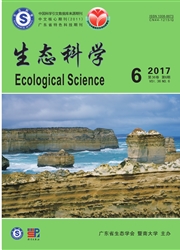

 中文摘要:
中文摘要:
利用1991年至2002年每月一次的监测资料,系统分析了浮游植物优势种和生物量的周年变化情况。同时,总氮、总磷和浮游植物叶绿素a含量等相关资料也被用于解释太湖富营养化演化与浮游植物的关系。结果显示,太湖总氮、总磷、叶绿素a和生物量均呈自梅梁湾底至湖心的逐步递减趋势。在20世纪80年代末太湖刚开始富营养化时,浮游植物优势种群从硅藻转变为蓝藻。之后,浮游植物优势种群一直是蓝藻,但各年的浮游植物总生物量有变化。总氮、总磷、叶绿素a和生物量的年均值持续增长至1996年,其后有逐步下降的趋势,究其原因可能和当地政府在太湖流域的控制排污行动有关。微囊藻在太湖的占优是太湖富营养化的标志之一。研究结果说明浮游植物在大型浅水湖泊中可以作为反映富营养化进程的生态指标。
 英文摘要:
英文摘要:
Inter-annual changes of phytoplankton dominant species and biomass in a large shallow lake, Taihu China, were analyzed using the monthly monitoring data covering the period of 1991-2002. The concentrations of total nitrogen (TN), total phosphorus (TP) and phytoplankton chlorophyll-a (Chla) were used to explain the development of eutrophication in the lake. The results showed marked gradients of TN, TP, Chla and biomass in the lake from high values near the northern river input in the inner Meiliang Bay towards lower concentrations in the lake centre. Phytoplankton dominant species shifted from diatoms to cyanobacteria at the end of 1980's when the eutrophication started in the lake. Thereafter, almost no change in dominant species but phytoplankton biomass varied among years. Annual averages of TN, TP, Chla and biomass increased until 1996 declining thereafter possibly because of the controlling of wastewater discharge from the catchment by the local government. Microcystis-domination in phytoplankton assemblages presented the indication of eutrophication in Lake Taihu. Our results suggest that phytoplankton is a suitable ecological indicator for eutrophication development in large shallow lakes.
 同期刊论文项目
同期刊论文项目
 同项目期刊论文
同项目期刊论文
 期刊信息
期刊信息
